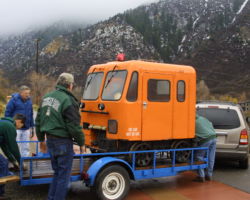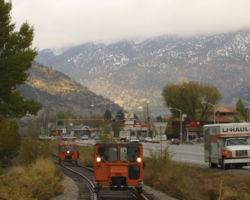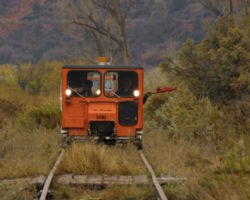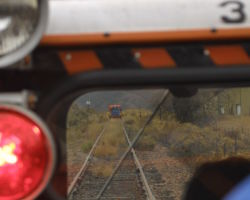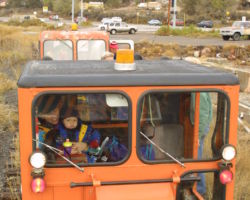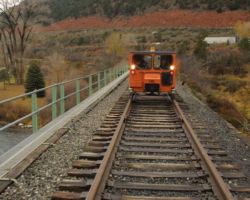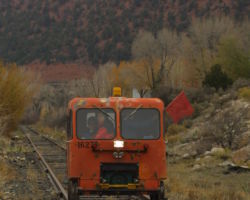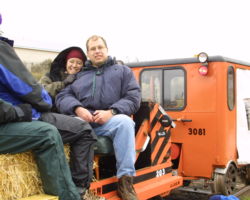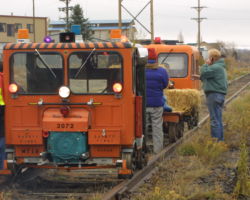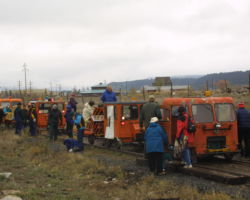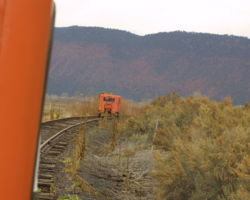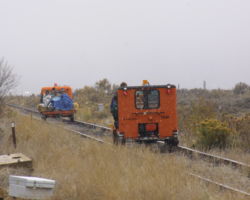Aspen, now better known as the mountain ski resort of choice to those with far too much money on their hands, was once a booming mining town, producing lead, copper, zinc and silver. Both the Colorado Midland and the Denver & Rio Grande laid rails through it. The Rio Grande built a 42-mile branch from a junction with the Tennessee Pass line in Glenwood Springs, CO, to serve the mines. The first train arrived in Aspen sometime in late 1887, and from then until the early 1990s the branch received continuous (but declining) service to customers – mainly several coal mines and a Budweiser distributor in the later years. The last coal shipments stopped with the closing of the Mid Continent coal loadout south of Carbondale in 1991. After that, the only traffic left was the occasional shipment of magnesium chloride to Carbondale and beer to a distributorship just south of Glenwood. All of that traffic ended in 1995, and the line went idle. With potential abandonment looming, the remaining 33 miles of line were purchased on Jun 30, 1997 by the Roaring Fork Railroad Holding Authority for future commuter rail use. With the failure of a recent a tax initiative intended to fund light rail development, the Aspen Branch will remain in banked status for the forseeable future.
Fortunately, at least someone’s getting a little use out of it. The Western Colorado Chapter of the National Railway Historical Society, in cooperation with the Roaring Fork Transit Authority (which now owns the line), ran its first fundraising trip between Glenwood Springs and Carbondale on 7-8 September 2002. I wasn’t able to make the first run due to prior commitments, but when a second run was announced on Nov 2, 2002, I signed up without a second thought.
It’s such an unusual opportunity that I couldn’t resist posting a few photos as a trip report all in itself. What follows is the 0900h run from Glenwood Springs to Carbondale and back. Despite a number of small setbacks (late arrival of one of the motorcars due to poor road conditions, the freezing cold, snow/rain/sleet, etc.), it was absolutely great fun for everyone. Based on the passengers riding on the open-air trailer with my wife and myself, I’d say there were as many members of the general public as there were railfans, if not more. It’s good to see such community support in such events.
I hope you enjoy the photos, and if this looks like fun, please come join the WCNRHS on any trips they run next year. The work they’ve done on the Glenwood depot in preparing the east wing to hold their museum is nothing short of outstanding, and I wish them the best of success in continuing this work.
(Update as of 2020: Rails on the Aspen Branch were removed between May and August 2006 to make room for a trail. The Western Colorado chapter of the NRHS seems to have folded, or merged into one of the other chapters. The Glenwood Springs museum in the old Rio Grande depot closed in 2017, when UP raised the rent from $250/year to $25000/year.)
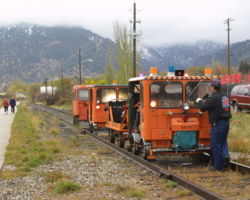
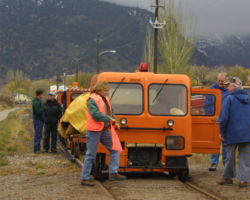
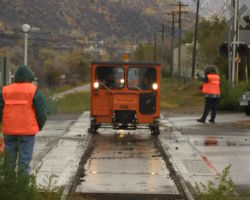
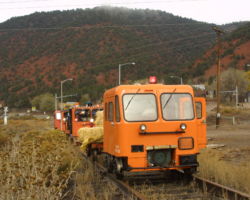
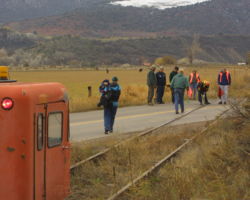
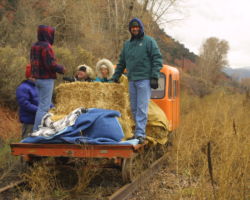
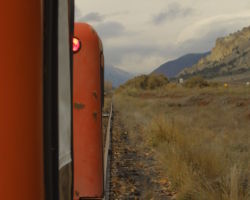
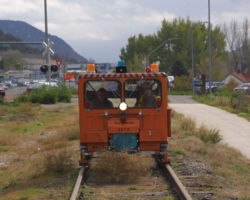
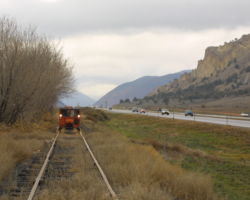
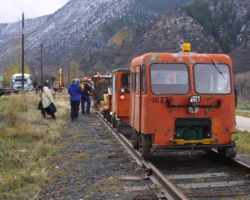
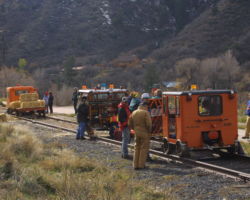
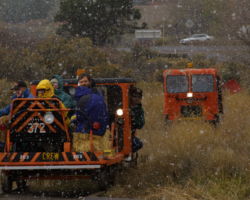
All shots in this trip report were taken with a Canon EOS D30 with a Sigma 28-80mm f3.5-5.6 lens or a Canon 75-300mm f4-5.3 IS/USM.
This work is copyright 2024 by Nathan D. Holmes, but all text and images are licensed and reusable under a Creative Commons Attribution-NonCommercial-ShareAlike license. Basically you’re welcome to use any of this as long as it’s not for commercial purposes, you credit me as the source, and you share any derivative works under the same license. I’d encourage others to consider similar licenses for their works.
